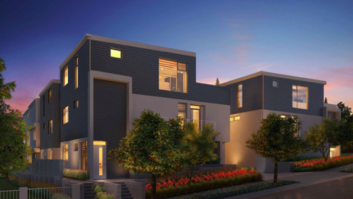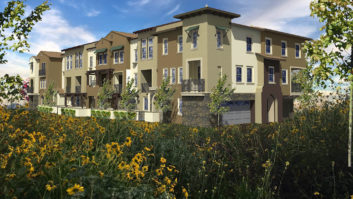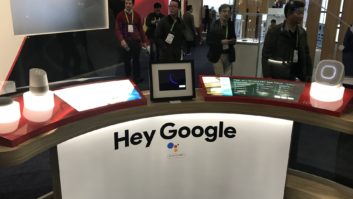As homeowners demand more control from one sourcebe it a laptop, mobile phone, or office desktop computerlife safety and security systems are being more intimately integrated with the entire home system.
The integration between the home automation products and the fire and buzzer alarm panels are working together instead of working separately nowadays, observed Don Childers, director of technical training at Security Central in Statesville, North Carolina. Now the things that they would normally do through their home automation system they are able to do through their fire and burglar alarm systems as well.
Chris Kangis, owner and systems designer at Electronic Interiors in Hopedale, Massachusetts, notes that video surveillance is growing more sophisticated. There has been more widespread adoption of video surveillance technologies, he said. The DVR for security cameras has been around for four or five years now, and that has firmly replaced the time-lapse VCR as the recorder of choice. The flexibility and features that these systems offer, he added, has driven this migration.
Access control, generally reserved for commercial facilities, is also on the horizon. We are also going to see more use of things like thumbprint readers or some sort of access control, Kangis said. We may see more and more access systems in homes that are currently used in businesses.
The challenge, for both custom AV and security installers, lies in successfully integrating security and life safety technologies with the rest of the systems in the home. Most new panels feature RS-232 serial ports so that it can be tied into a Crestron or AMX device. However, some like Kangis feel that very few companies, if any, are doing a good job in what they are providing to integrators. He encourages manufacturers to seek more feedback from those working out on the field while new products are in the development phase.
Childers, too, cites some issues with security integration. Our industry is still in the process of being able to talk back and forth with these products, he said. We are able to do it a lot of times, but we are not able to do it with ease. Some of the larger manufacturers out there are getting on board, and the technology is progressing. They are making it a little easier than it was a couple of years go, but the biggest challenge is communicating with the home automation products.
This is coupled with the fact that, as is the case with any residential system, homeowners want their security systems to be easy to operate. Most of these products are not built for home applications; they really are designed for a control center where you have someone sitting at a desk, managing this equipment, Kangis said. Like with all technologies, the integrators job is to provide another layer so that the client can get what they want out of the technology without having to understand it and interact with it. And, the majority of the devices should be out of sight in order to adhere to the clients aesthetic criteria.
GE Security based in Bradenton, Florida, has attempted to simplify things with the introduction of its SmartCom devicea system that combines intercom technology with audio, lighting, and HVAC control, as well as energy management. This touchscreen will incorporate with our Concord line of security panels to get that functionality that homeowners desire, explained Steve Connor, a marketing product manager at GE Security. When the homeowner arms the security system if they are going to be away, they can reduce the temperaturedepending on the time of yearand turn off unnecessary lights with one function. The system can be scheduled so that the homes temperature adjusts just before the residents arrive.
Connor maintains that systems must become more all encompassing and easier to install as the border between security contractors and custom installers grows less defined. There are some installers who started out by installing security systems, and others came from other fields, such as custom AV, he said. There is a real blurring of the lines now between who is getting that installation dollar. The better we can integrate a solution and make it all work together, taking into account the ease-of-install, the more it will eliminate headaches for our integrators.
While both homeowners and the industry are pushing toward further integration, Childers notes that in some casesespecially in large homes where fire marshals, AHJs, and insurance companies demand certain specificationssome separation between life safety, security, and home control is required. Many times, people will install a UL-certified combination fire and burglar alarm system. I have found that most AHJs prefer those to be separated, because if the home automation system should go down and take the burglar alarm with it, and AHJ will accept that, but they will not accept it if the fire system is tied to it, he illustrated. I suggest that installers provide two separate panels, tie the burglar alarm to the home automation, but keep the fire panel separate.
Kangis believes that the best way for most custom installers to deal with life safety and security is to outsource the work to a reliable contractor that is highly specialized in the field. Unless a company is installing a high volume of security systems already, the training and insurance required may not make including security on your roster a worthwhile venture. Interfacing with security systems is really about dealing with security contractors, because most integrators dont do security, either on purpose or by accident, he observed. One of the key things for dealers is to help their clients proactively make good decisions about who they deal with as a security contractor, assuming its a third party. If you choose the right person to do business with, and up front, let the security contractor understand what you are trying to do and what you need to do for the client, the results will be better in the end.
Carolyn Heinze ([email protected]) is a freelance writer/editor.





